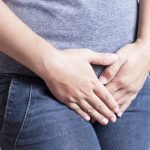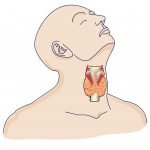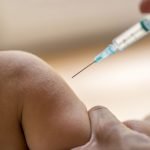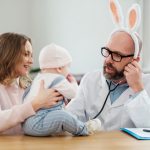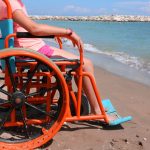Vitalism as the Standard of Care- Part 2
JAMES SENSENIG, ND
LETITIA DICK, ND, VNMI
This article joins a series of articles in NDNR that are based on transcripts of the Naturopathic Medicine Institute (NMI)’s Wednesday morning call-in program, The Vital Conversation. The program is hosted by senior Vitalists to enhance the ability of naturopathic physicians to practice as vitalist naturopathic doctors. In this lightly edited transcript (by Emily Kane, ND), the second part of a 2-part conversation that took place on April 12, 2017, Drs Sensenig and senior Vitalist Dr Letitia (“Tish”) Dick discuss why there is such apparent widespread resistance to the obvious potency of the vital force – what we naturopathic physicians, with love and respect, call the Vis.
Dr Sensenig: You mentioned looking at blood under a microscope. How many of our colleagues and students who are graduating today have one?
Dr Dick: When I was at NCNM, it was required that we purchase our own microscope. Because of CLIA lab regulations, the primary care physicians only perform simple microscopy procedures like wet mounts. So, most of the time, doctors don’t do microscope work at all any more. I don’t think it’s even a requirement now for students to purchase a microscope.
Dr Sensenig: Back in the last century, when one was accepted into medical school and naturopathic medical school, a microscope was required of an entering student. Today, you’re required to have a laptop. Do we even use microscopes in school anymore? Or is everything online and we don’t need to look at our patients’ tissues with a high-powered scope?
Dr Dick: I understand from one of the NCNM students, who was working with me a couple of years ago, that the school had a set of slides already made up, and they would look at those slides under the scope. So, they were not taught to do their own blood counts, like we did in school with the smears. They weren’t taught any of those basic lab procedures because all those things are automated at the lab these days. I think it’s a worthy thing to learn, because someday we might lose those skills altogether.
The blood microscopy I do is simply the Bolin blood photos. You don’t use them for diagnosis; I simply use them for following a case. What the patients get out of it is a visual confirmation. They’ll say, “Oh, I feel better; but now, look, my blood looks better, too!” That physical validation encourages them to continue on their path of making good food choices and applying their home remedies. We often do blood draws and look at numbers on a paper, but that doesn’t make a lot of sense to the patients. But when they see an actual photo of their blood, it can really hit home. So, it’s a simple and helpful technique that can be used for patient management.
Dr Sensenig: Like some other techniques, the Bolin testing is consistent with the idea of improving the vital force, or improving situations by moving a patient in the direction of balance and recovery. In that regard, it’s a simple, easy, objective way to measure the vital force.
If we’re thinking about people on a continuum – moving from heightened disturbance to less and less disturbance and more and more balance – there’s a way to follow them from visit to visit. In that sense, it probably ought to be a tool that at least everybody knows how to use, or at least understand conceptually, because it’s consistent with the idea of restoring health to the entire individual, not just treating a symptom.
Dr Dick: My dad said that the whole goal of everything we do is to build the blood. If your blood isn’t strong, you can’t heal anything. Everything you do, everything you support with your metabolism, everything you eat, everything you drink, everything you breathe, should be supporting that natural function. If it’s not supporting blood building, then it’s working against it. It’s that cut and dry.
The aspirin you take is not supporting you; it’s working against you. It’s a poison. People take a baby aspirin, thinking that they need it to prevent their heart disease. They’re basically poisoning their body every day. It suppresses their pituitary, thyroid, and other functions.
To educate patients to this other level takes some work in a lot of cases. Some other people will fall in line pretty quickly because it’s right up their alley. But, for a lot of people, Vitalism is a brand-new concept. This is a situation that a lot of naturopathic physicians don’t understand. It takes time to re-educate our patients.
Dr Sensenig: Dr Broadwell would have said the same thing but in a slightly different way: “That which we put in the body, for it to be consistent with the healing process or a return to normal, has to be something that belongs in the body and can be assimilated by the body. All substances that are used allopathically are toxic.”
He would say, “If you take an aspirin for a headache, you haven’t returned to health until your body eliminates the aspirin. It’s toxic, and it requires some effort on the part of the body to clear it.” How can you poison somebody back to health?
Dr Dick: A young boy was brought to me for his follow-up visit. He was 10 years old. Initially, his blood microscopy showed that he was incredibly anemic. His chief complaint was that he had a stomach ache every day, at school and at home, and his mom just didn’t know what to do for him. He was pretty pale, with allergic shiners. He came back in after the diet change I gave him, which he had been following since our first visit. I think he was potato intolerant, if I recall.
He didn’t have hydrotherapy. She had 7 children; it was hard to get this boy in for therapy, and money was a concern. So, they were basically just following the diet. For nutritional support, because his blood looked so anemic, I gave him a chewable iron in the form of buffalo liver capsules (which is one of my favorite ways of giving B vitamins and iron). He was happy to take the capsules.
After 3 months, he came back in. His blood was 90% improved, he had energy, and he had no more stomach aches.
His mom said, “Do you think this would also work for bedwetting? Because he hasn’t been wetting his bed.”
I said, “You didn’t tell me about that. Has that been a concern?” He was 10 years old and was still wetting the bed.
I said, “If I would have known that, I would have suggested some other things to do.”
She said, “No. He’s not wetting his bed now. Could this affect that, too?”
I said, “Obviously, it has.”
She said, “Can you look in his eyes again? You initially said he had a kidney problem.”
I looked back in his records, and I had marked on his iris information that he had a lesion in his left kidney. I looked at the left eye, and then I looked at his right eye, because I thought that I might have written down the wrong eye. I said, “You know, this doesn’t stand out now, but if I look really closely at the left eye, there’s a slight area where I can see that there was a lesion.”
In 3 months’ time, that kidney lesion had healed, as far as the fibers in his iris showed. And he was no longer wetting his bed. That wasn’t anything I was directly treating. That healing was just simply from bringing up the nutritional status of this child, decreasing his inflammatory gut problem with good diet and support. That was a side effect of the natural therapeutics.
Dr Sensenig: If you live in the mechanistic world, you would struggle to figure how this case worked because you wouldn’t see the relationship between food assimilation and increased vitality. But if you live in the Vitalist model, it’s self-explanatory because you’re basically affecting the economy of the whole body.
Surprisingly, when I make recommendations, people will occasionally ask me if there are any side effects. I would say, “Yes. There is a side effect of this intervention, which is robust, good health.” Because everything is moving in the direction of cure or balance.
Dr Turska was very outspoken about this blood analysis issue, as were the predecessors in this profession. He said, “That which finds utility and is of benefit to patients and to mankind almost guarantees that the ‘regulators’ are going to go after it.” The legal ramifications of what we’re talking about could be different from state to state, if not at the federal level. This is one of the problems that our profession faces, especially when the professionals are not on the same page with respect to various therapies and interventions. I suppose there has to be a cautionary note, depending on where people are.
Dr Dick: In the process of seeing patients, I say, “I’m going to look at your blood under the microscope. Let’s just compare it to the chart here. Let’s see how you fare. We’re just going to follow your case this way, because my whole goal is to improve your blood.” That’s all I do. I don’t advertise blood analysis as a service in my clinic.
Dr Sensenig: For the record, just because the technique we’re talking about is not widely accepted in conventional circles doesn’t mean that it doesn’t have value. It actually probably means that it does have value. And this example serves to convey the bias of the regulatory system and the people who control it.
Many years ago, when I was at National College in Portland, we had a guest speaker – a Native American medicine man – who did a workshop at the school. I’ll never forget the day that he was off and running about something in quantum physics. He saw the faces of the group, and said, “Oh. You’re surprised. Let me tell you something. I read many of your scientific journals. There’s something you need to know. Someday, your scientists will know what we know.”
I feel the same way about medicine. Someday, conventional medicine will know what we know, and the techniques that we’ve learned and the ideas that we have espoused will be the dominant medicine of our culture. Because it just makes so much more sense. But, we’re not there yet, and it may take another couple of centuries to get there.
I was sent an article by one of my patients a few weeks ago, describing researchers at Oxford University who have come up with this novel idea where they think that you might be able to get some information about a person’s nutritional status by analyzing their urine.
Dr Dick: Wow, what a concept. Isn’t that something we’ve been doing for 200 years?
Dr Sensenig: They’re saying in this article that someday this will be a way to tell what people are eating or not eating.
Dr Dick: Well, there’s the urinary indican test right there.
Dr Sensenig: You’ve mentioned several times that you’ve used the 50s and the 42s; these are herbal capsules – gentian and skullcap, for example. Where do you get your herbs, or how do you make them?
Dr Dick: For years, we’ve gotten our botanicals already powdered from a good company in Index, Washington. If I don’t get them from there, I will wildcraft or grow my own and process them. As I was showing the young doctors and students I was teaching these past couple of weekends, the difference between what I can purchase, even from a high-quality company, and what I can wildcraft and dry in my food dehydrators and process myself is astounding. It’s always optimal to grow your own medicine; the quality is so much higher.
For instance, I have a little bottle of shave grass, also known as horsetail, rush, or equisetum, which we use for our kidney teas. That’s easily found. I wildcraft that here in the Spokane area. I go and collect bags and bags of it, then dry it. Then I have it for the year. The herb I get from the company is kind of a pale gray. The herb that I process is a bright green. I asked a rep at the company if she was selling me older herbs. She said, “No. This was this year’s batch.” I said, “But this doesn’t look like mine.” And she told me that it has to come to her already steam processed.
It’s sterilized with a steam process, then dried, then baled. So she gets it in big bales. She knows it’s certified clean; it doesn’t have any bacteria, mold, etc. It has to be pre-sterilized for these herbal companies to certify that it’s okay for your consumption. Basically, there’s already been a tea made out of that herb, and I’m getting it already denatured; it doesn’t have the superior quality of fresh dried.
When I harvest or grow my own botanicals and dispense that from my medical dispensary, those are potent plants, potent medicine. My Echinacea root is a whole different level of effective compared to buying Echinacea tincture from someone.
It’s so imperative that we keep our legal identity that allows us to grow, wildcraft, compound, and make our own medicine. As far as I know, that’s allowed in just about every state licensing law. I know it is in Washington, and it’s been that way for a long time. But that was another thing the young doctors and students didn’t know. They didn’t realize they had the ability to do that with their license, especially here in Washington. They thought they had to purchase the capsule, or something already compounded, from a nutraceutical company.
That shocked me, because as long as I can remember, my dad would always make his own herbal teas. I buy the powders and blend them, and then I encapsulate them myself. It seems like a dying art now.
Dr Sensenig: When I was a student, most of our teachers and predecessors were growing, wildcrafting, and collecting their own medicines, at least the ones they were able to find or grow locally.
This is an example of what happens when we lose touch with our basic understanding of what a naturopathic practice is. As we become more and more regimented, or less and less eclectic, as we start buying these medicines from pharmaceutical-like companies, companies that are manufacturing them – and I’m not impugning the quality of what we’re getting – but as we access these from sources that have them already manufactured and packaged for us… if we’re talking about botanical extracts, supplements, and other nutrients, and we lose track of the knowledge of how these work and where they come from, we’re also going to lose the ability to source them.
Anybody who knows anything about biology or genetics would have to agree that we have become more and more homogenous as practitioners, not only within the profession, but also related to the medical profession. It’s at our own peril; it’s the diversity in which we have strength.
Dr Dick: I was talking to Robert May at the WANP, and he said that one of his goals is to keep the licenses as broad as possible. Any time he feels that the licensing is becoming too restricted, he tries to push that back open. It’s only through that broad diversity of having this big scope of practice that we allow these things to still occur. If we’re not mindful of that when we go for a new law or to change our laws in certain states, we will lose scope. That is imperative to our ability to practice as naturopathic physicians, because we are each specialists in natural therapeutics and we are the ones who know how to harvest and compound and dispense these proprietary botanicals. Maybe we can buy them, but they may not be the best quality, or as potent as we like them to be. I think it’s very important that we keep that broad scope as big as possible in our defense of our medicine.
Dr Sensenig: I couldn’t agree more. Lindlahr would also agree that when the practitioner is preparing the therapeutic intervention, the homeopathic remedy, and the botanical remedy, some of him- or herself is in that remedy. All the more reason for the practitioner to have that kind of personal ownership or relationship with those things that he or she is using in a way to restore health.
Dr Dick: I can tell you that when I choose my herbs, sort them, and clean them, I throw out the bad stuff. I don’t want that in the mix. I only choose the best quality of what I’m going to compound or make into teas. I put an intention into it that is very specific. I might even say, “Let this be the strongest botanical I can make for my patient.” I often say that when I make my herbs. I don’t know that other people, such as corporations, put that intention into their botanicals.
Dr Sensenig: That could be another entire talk – intentions. Just the fact that you have that kind of personal relationship with the remedy, and you have an intention for what it is going to do for the person, has to inform them what it’s doing in whatever way that happens. Intention is key for a truly vitalistic practice.
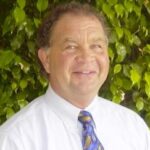
James Sensenig, ND was a 1978 graduate of NCNM in Portland, OR. For over 40 years he maintained an eclectic practice in Hamden, CT. Over the years, Dr Sensenig held prominent positions in the various naturopathic colleges and the AANP. A champion of classical naturopathic medicine, Dr Sensenig received an Honorary Doctor of Naturopathic Philosophy degree from CCNM, and received numerous awards for his dedication to teaching the principles of naturopathic medicine.
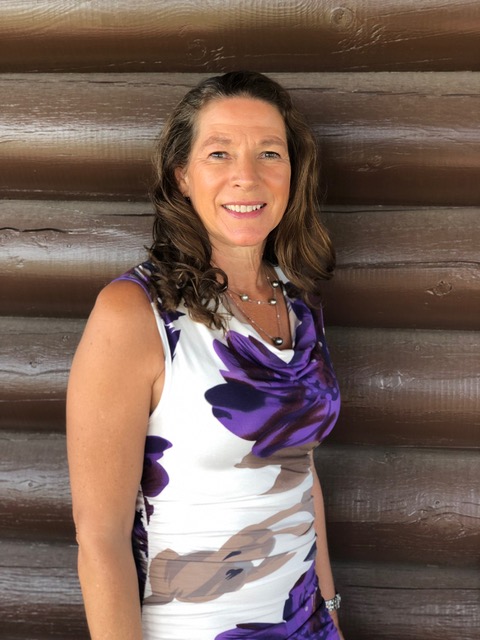
Letitia Dick, ND, VNMI, earned her doctorate in Naturopathic Medicine in 1990 from NCNM. She then completed a 3-year residency with her late father, Dr Harold Dick. After his passing, she continued his classical naturopathic clinic in Spokane, WA, now over 60 years old. Dr Letitia has been in practice 30 years; is past adjunct faculty at Bastyr University; co-founder of the Carroll Institute of Natural Healing (a non-profit, post-graduate institute teaching the healing methods of Dr Otis G. Carroll); author of The Ultimate Text In Constitutional Hydrotherapy: A 100 Year Tradition of Clinical Practice; founder and senior Vitalist of the Naturopathic Medicine Institute; and an international speaker / medical educator.


